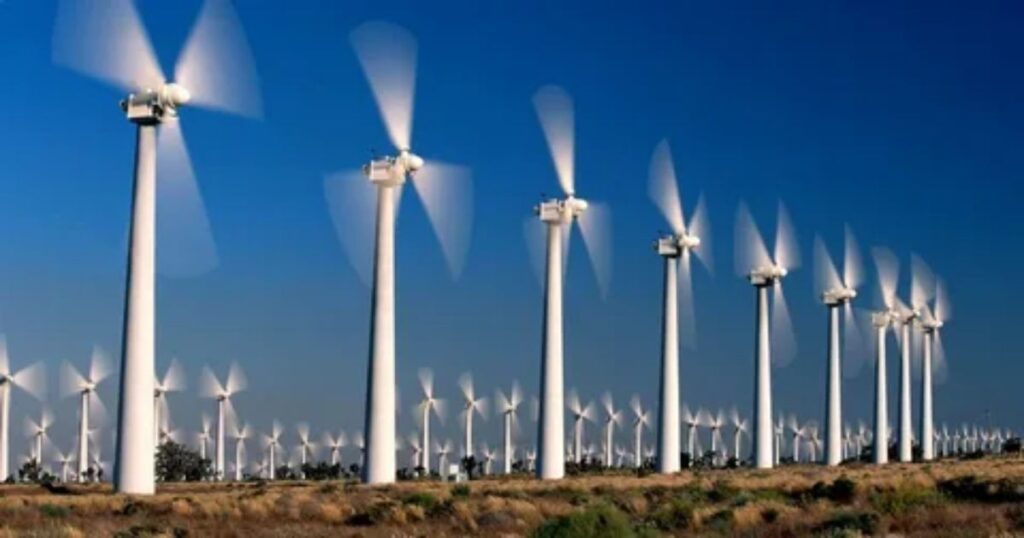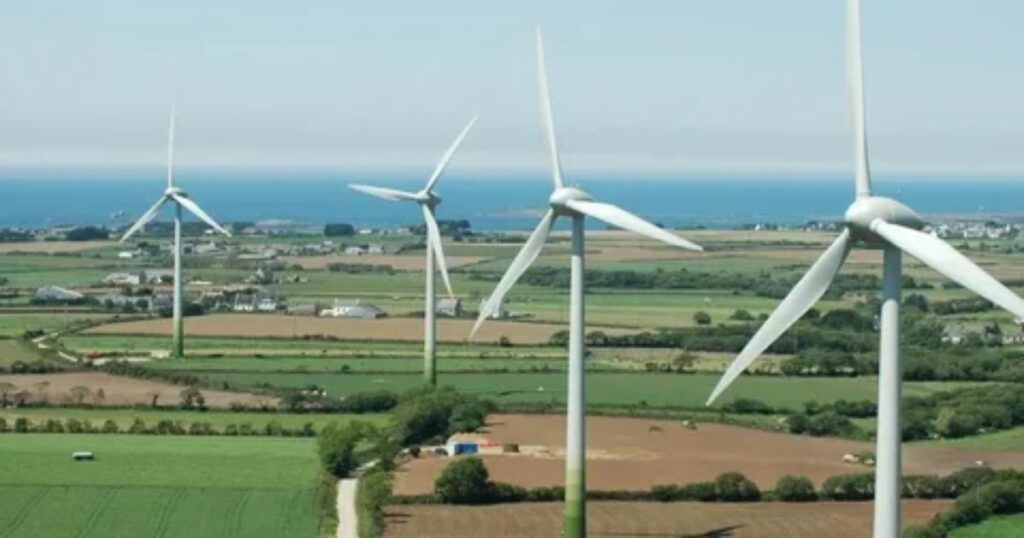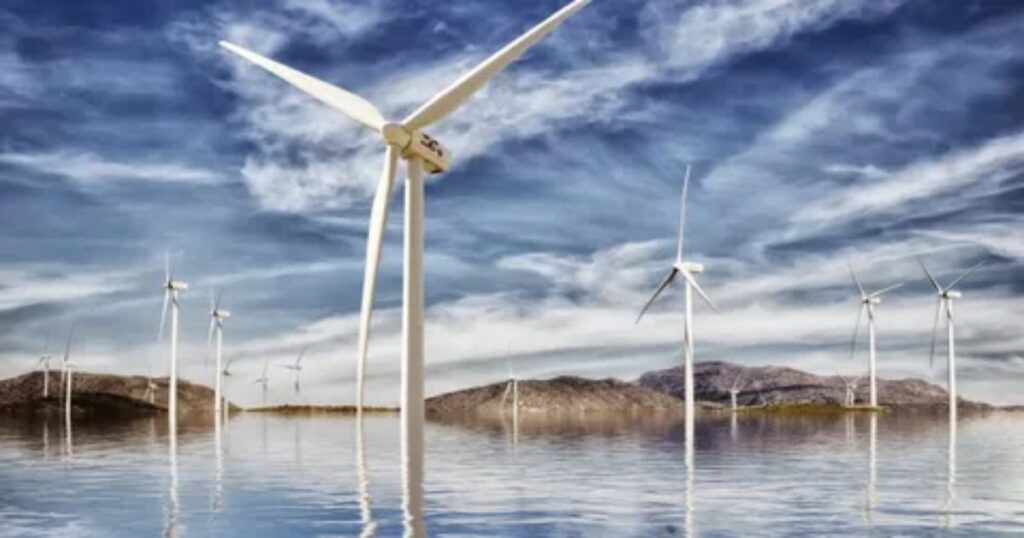Wind power is a dynamic energy source that has gained significant attention due to its potential to reduce reliance on fossil fuels and decrease carbon discharges. Wind power converts kinetic energy into electrical power through the use of wind turbines.
This article researches into the process of how wind power works from the basic principles to the advanced technologies that make it an essential component of the global energy mix. Wind farms are large installations of multiple wind turbines that work together to generate significant amounts of electricity.
One of the most significant advantages of wind power is its environmental benefits. Unlike fossil fuels wind power generates electricity without emitting greenhouse gases or other pollutants. The future of wind power looks promising as technology continues to advance and the demand for clean energy grows.
The Basics of Wind Energy
Wind is essentially air in motion, caused by the uneven heating of the Earth’s surface by the sun. This movement of air can be harnessed to perform work, just as early civilizations used windmills to grind grain or pump water. The basic principle behind wind energy is the conversion of the wind’s kinetic energy into mechanical energy.
When the wind blows across a wind turbine’s blades it causes the blades to spin. This rotation drives a generator that converts the mechanical energy into electrical energy. The amount of energy that can be harnessed from the wind depends on several factors, including wind speed, air density, and the area swept by the turbine blades.
How Wind Turbines Work

Modern wind turbines are sophisticated machines designed to maximize energy capture. They consist of several key components the rotor blades, the nacelle, the tower, and the generator. The rotor blades are aerodynamically designed to capture the maximum amount of wind energy. As the wind flows over the blades, it creates a lift force that causes them to rotate.
This rotation is transferred to the nacelle, which houses the generator and other mechanical components. The generator converts the rotational energy into electrical energy, which can then be fed into the grid or used locally. The tower supports the turbine and elevates it to a height where it can capture stronger and more consistent winds.
Types of Wind Turbines
There are two primary types of wind turbines horizontal-axis and vertical-axis. Horizontal-axis wind turbines (HAWTs) are the most common and are characterized by their propeller-like blades that rotate around a horizontal axis. These turbines are often found in large wind farms and are designed to capture wind energy efficiently over a wide range of conditions.
Vertical-axis wind turbines (VAWTs), on the other hand, have blades that rotate around a vertical axis. While less common, VAWTs are often used in urban environments where wind direction can be more variable. Both types of turbines have their advantages and are chosen based on the specific requirements of the installation site.
Wind Farm Development
Wind farms are large installations of multiple wind turbines that work together to generate significant amounts of electricity. The development of a wind farm begins with site selection, which is crucial for ensuring the efficiency and viability of the project. Ideal sites are typically located in areas with consistent and strong winds, such as coastal regions, open plains, or offshore locations.
Once a site is selected, extensive environmental and technical assessments are conducted to determine the potential impact on local wildlife, ecosystems, and communities. The turbines are then strategically placed to maximize energy capture while minimizing interference with one another.
- The development of a wind farm starts with finding the right location.
- It involves studying wind patterns to ensure enough wind for power.
- The land must be checked for environmental and community impacts.
- The planning process includes securing permits and approvals.
- It takes time to arrange funding and partnerships for the project.
- The construction of turbines is a key part of the development.
- It requires ongoing maintenance to keep the wind farm running smoothly.
Offshore Wind Power
Offshore wind power represents a growing sector within the renewable energy industry. Offshore wind farms are located in bodies of water, typically on the continental shelf, where wind speeds are higher and more consistent than on land. These farms have the potential to generate significant amounts of energy and are particularly attractive in regions with limited land space for onshore wind farms.
However, offshore wind power comes with its own set of challenges, including higher construction and maintenance costs, as well as the need for specialized technology to withstand harsh marine environments. Despite these challenges, offshore wind power is expanding rapidly, with numerous projects underway around the world.
The Role of Technology in Wind Power

Technological advancements have played a crucial role in making wind power more efficient and cost-effective. Innovations in turbine design, materials, and manufacturing processes have led to larger and more efficient turbines capable of generating more electricity at lower costs.
Advancements in control systems and predictive maintenance have improved the reliability and lifespan of wind turbines. The integration of wind power with other renewable energy sources, such as solar power and the development of energy storage solutions are also contributing to the increased adoption of wind energy as a reliable source of electricity.
Challenges And Solutions
Despite its many advantages wind power faces several challenges. One of the main challenges is the intermittency of wind, as wind speeds can vary significantly over time. This variability can make it difficult to match supply with demand and requires the integration of energy storage solutions or backup power sources. Another challenge is the impact of wind turbines on wildlife particularly birds and bats, which can be injured or killed by the rotating blades.
To mitigate these impacts, researchers are developing new turbine designs and operational strategies, such as curtailing turbine operation during periods of high wildlife activity. Noise and visual impacts are also concerns, particularly in communities near wind farms. However, with careful planning and community engagement, these challenges can be addressed.
The Environmental Benefits of Wind Power
One of the most significant advantages of wind power is its environmental benefits. Unlike fossil fuels, wind power generates electricity without emitting greenhouse gases or other pollutants. This makes it a key component of efforts to combat climate change and reduce air pollution. Wind power also has a much smaller water footprint compared to conventional power plants which often require large amounts of water for cooling.
- The use of wind power reduces greenhouse gas emissions.
- It helps decrease air pollution by replacing fossil fuels.
- The wind energy is a renewable resource that won’t run out.
- It requires less water than traditional power plants.
- The wind turbines have a small land footprint, preserving nature
- .It supports local ecosystems by avoiding harmful mining practices.
- The adoption of wind power helps combat climate change.
The Future of Wind Power
The future of wind power looks promising as technology continues to advance and the demand for clean energy grows. Many countries have set ambitious targets for increasing the share of wind power in their energy mix, and significant investments are being made in both onshore and offshore wind projects.
Emerging technologies such as floating wind turbines have the potential to unlock new areas for wind energy development particularly in deep water regions. Advancements in grid integration and energy storage will help to overcome the challenges associated with the intermittency of wind power making it an even more reliable source of electricity in the future.
Economic Impact of Wind Power

Wind power not only contributes to environmental sustainability but also has significant economic benefits. The wind energy industry creates jobs in manufacturing, construction, and maintenance, providing economic opportunities in both urban and rural areas.
Moreover, wind power can contribute to energy security by reducing reliance on imported fossil fuels and stabilizing energy prices. As the cost of wind power continues to decrease, it is becoming an increasingly competitive option for generating electricity, leading to further growth and investment in the sector.
Frequently Asked Questions
How Do Wind Turbines Generate Electricity?
Wind turbines generate electricity by capturing wind with their blades which then spin a rotor connected to a generator. The generator converts the mechanical energy from the rotor into electrical energy that can be used to power homes and industries.
What Are The Main Components Of A Wind Turbine?
The main components of a wind turbine include the rotor blades, nacelle, tower, and generator. The rotor blades capture the wind’s energy the mechanical parts support the turbine and the generator converts mechanical energy into electrical energy.
What Are The Environmental Benefits Of Wind Power?
Wind power has several environmental benefits including the reduction of greenhouse gas emissions, minimal water usage compared to conventional power plants.
What Are The Challenges Associated With Wind Power?
Challenges associated with wind power include the intermittency of wind, which can lead to variable energy output, potential impacts on wildlife, noise, and visual concerns for nearby communities.
Conclusion
Wind power is a clean renewable energy source that has the potential to play a major role in the global transition to a low-carbon energy system. Through technological advancements and strategic planning, the challenges associated with wind power can be addressed paving the way for a sustainable energy future. Wind power not only contributes to environmental sustainability but also has significant economic benefits.
As the demand for renewable energy continues to grow wind power will remain a key component of the energy mix, providing reliable and environmentally-friendly electricity for generations to come. Wind power has several environmental benefits including the reduction of greenhouse gas emissions, minimal water usage compared to conventional power plants.
